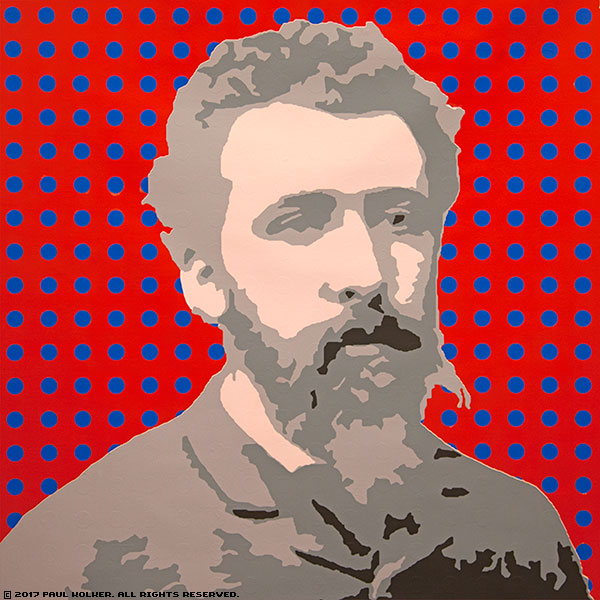It should be no surprise that the playwright James Lapine characterized Georges Seurat, the chromoluminarist and divisionist-pointillist artist portrayed by Jake Gyllenhaal in the current Broadway show, Sunday in the Park with George, as one who is enamored with color and light, and how each influences human affect and feelings. Lapine’s conception of the scientific and technological extrapolation of Seurat’s nineteenth-century painting practice by the painter’s progeny a century later …also named George; is an electrified light sculpture called “Chromolume #7 … [a] post-modern machine [that] glows a range of cool colored light.” A serendipitous reference to Kolker’s light sculptures.

Paul Kolker: georges blue on red, 2017
acrylic on canvas
55 x 55 inches
In Paul Kolker: The Dot is in the Park, fourteen works are curated by the artist and serve to test the viewer’s perception; primarily, as to how color pairings affect our feelings and behavior. The exhibition is on view at the Paul Kolker collection adjacent to the HighLine at 511 West 25th Street between Tenth and Eleventh Avenues from May 25 through July 28, 2017. Currently on view are: Paul Kolker: Color, Color… Embossed Decalcomania; at 511 West 25th Street through May 18, 2017.Paul Kolker: Abstract Decalcomania; is ongoing at 600 Third Avenue.
